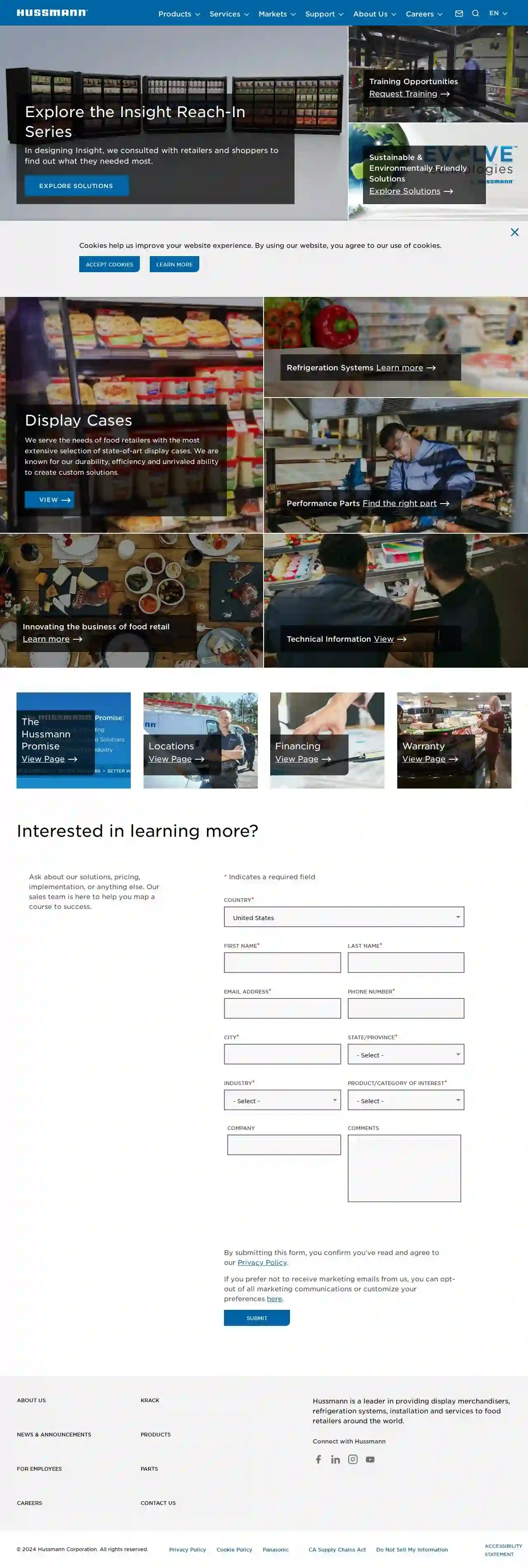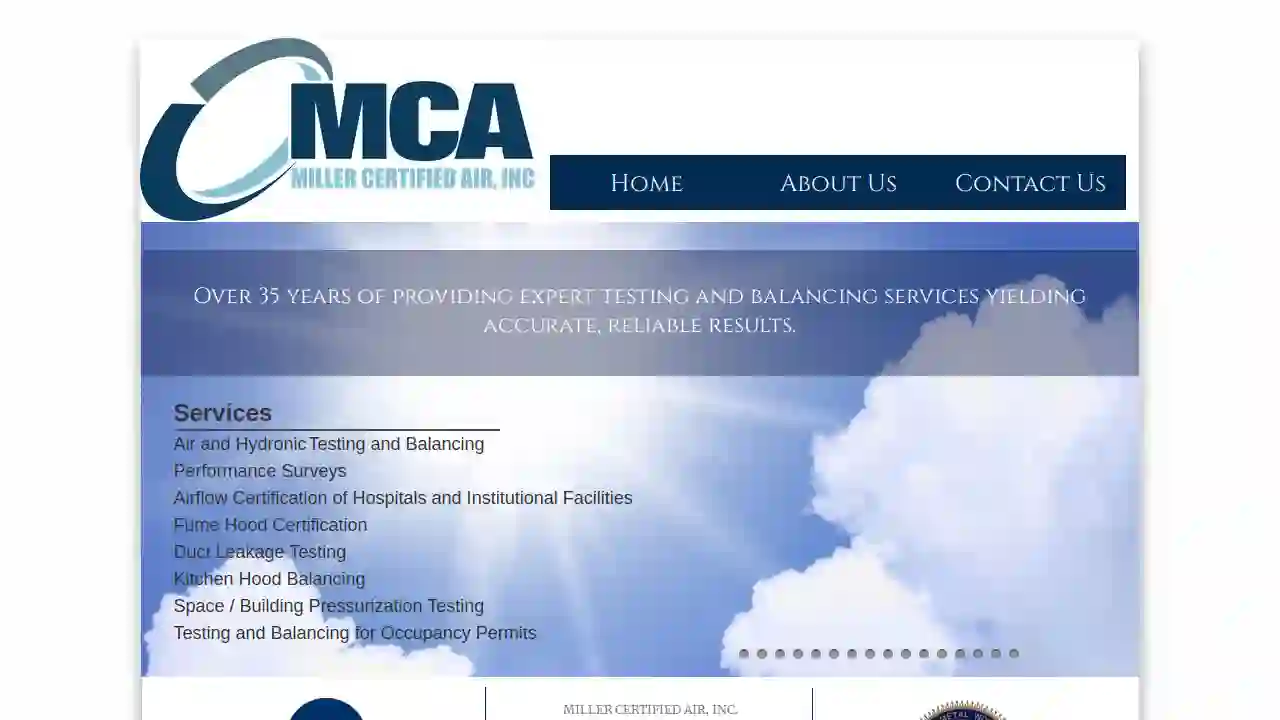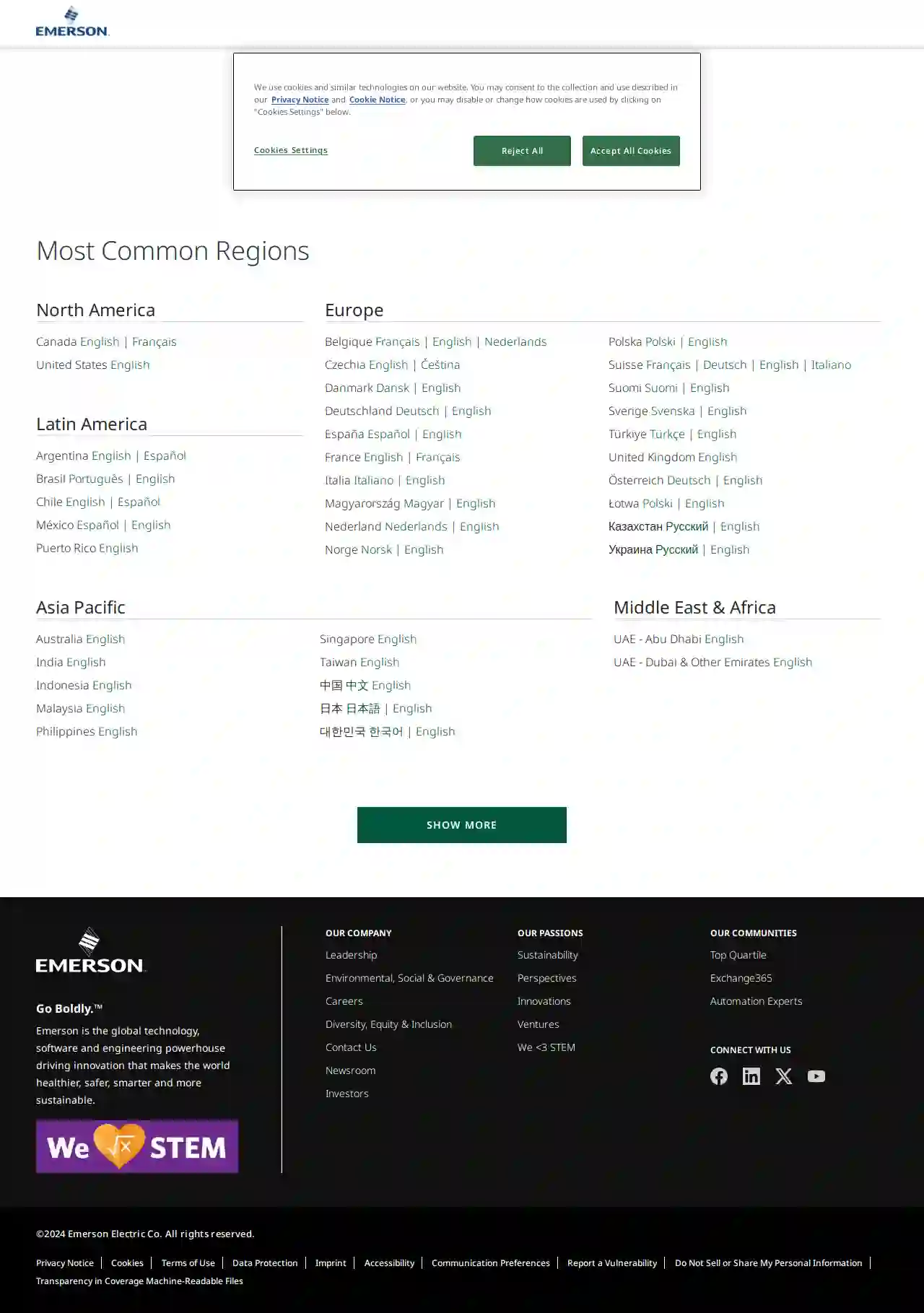Commercial HVAC Grain Valley
Best Business HVAC in Grain Valley
Get multiple Commercial HVAC quotes for your project today! Compare profiles, reviews, accreditations, portfolio, etc... and choose the best offer.

Tri State Mechanical Services Inc
4.449 reviews2338 N Lindbergh Blvd, St. Louis, MO 63132, 63132, USTri-State Mechanical Services is a family-owned and operated mechanical contracting service serving the St. Louis and Metro areas, including Central Missouri and Southern Illinois since 1989. We pride ourselves on providing the highest quality workmanship every day as we build long-term relationships with our clients. We are a full-service mechanical contractor specializing in HVAC & Food Service Equipment. Our services include installation, sales, repair, and service for air conditioning and heating, commercial refrigeration, and kitchen equipment. We have a professional team of technicians who provide honest and dependable service 24/7. We service all brands, including York, Lennox, Carrier, Rheem, Ruud, and Trane. We also have a 24-hour emergency service available with an extensive parts stock for all commercial and residential equipment, old and new. If we don't have it, we'll source it fast. We are your one-stop shop for all your mechanical contracting needs in St. Louis.
- Services
- Why Us?
- Our Team
- Testimonials
- Gallery
Get Quote
Kirkwood Heating & Air Conditioning
4.7108 reviewsSt. Louis, MO, 9350 Watson Industrial Park, 63126, USKirkwood Heating and Cooling is a trusted HVAC company in St. Louis, MO, providing top-notch heating, cooling, and heat pump services. Our experienced team has been working in the industry for a long time, with the necessary skills, training, and certifications to resolve your heating, cooling, and indoor air quality problems. We offer a range of services, including repair, maintenance, installation, and replacement, with a focus on individual projects and attention to detail. Our fair pricing system caters to the customer's needs, and we ensure that the entire process occurs within your budget. We are available 24/7 for emergency services and offer a range of products from Carrier, including air conditioners, heat pumps, gas furnaces, programmable thermostats, humidifiers, ductless split systems, boilers, air cleaners, and zoning products.
- Services
- Why Us?
- Accreditations
- Our Team
- Testimonials
- Gallery
Get Quote
Thomas Hoffmann Air Conditioning & Heating LLC
4.9418 reviewsSt. Louis, Missouri, 1623 Wendover Lane, 63131, USThomas Hoffmann Air Conditioning & Heating LLC is a trusted provider of HVAC services in St. Louis, Missouri. With years of experience, our team of experts is dedicated to providing top-notch service, repair, and installation of air conditioning and heating systems. Our mission is to help our customers breathe easier today by providing exceptional indoor air quality assessments and solutions. We pride ourselves on our commitment to customer satisfaction, honesty, and integrity. Our team is led by Thomas Hoffmann, a seasoned professional with a passion for delivering exceptional service. We are fully accredited and insured, and our team is fully trained to handle all types of HVAC systems. Whether you need emergency service, routine maintenance, or a new installation, we are here to help. Contact us today to schedule your appointment and experience the difference for yourself.
- Services
- Why Us?
- Our Team
- Testimonials
- Gallery
Get Quote
Hussmann Corporation
3.666 reviewsSt. Louis, USHussmann is a leader in providing display merchandisers, refrigeration systems, installation and services to food retailers around the world. Inspired ideas that anticipate shoppers' desires. At Hussmann, our innovative thinking and integrated solutions are transforming the business of food retail and turning the shopping experience into a pleasure.
- Services
- Why Us?
- Gallery
Get Quote
Miller Certified Air
Suite 105, 3460 Hampton Ave., St. Louis, 63139, USOver 35 years of providing expert testing and balancing services yielding accurate, reliable results. Testing and Balancing MILLER CERTIFIED AIR, INC. Testing And Balancing 3460 Hampton Ave. Suite 105 St. Louis, MO 63139 Office: (314) 352-8981 Email: [email protected] Copyright 2013. Miller Certified Air, Inc. Testing and Balancing All rights reserved.
- Services
- Why Us?
- Accreditations
- Gallery
Get Quote
Morgner Inc.
4.631 reviews3154 S Brentwood Blvd, Saint Louis, 63119, USAt Morgner Inc. Air Conditioning & Heating, making your home cozy is our biggest interest. That's why we supply lasting HVAC equipment and excellent work in St. Louis. Our technicians are knowledgeable in a full range of services, so you can feel confident in your results. They'll offer the support you are looking for, whether it's installing an updated HVAC system or servicing and maintaining your present equipment. We're here to help with all of your needs, so call us at 314-262-4541 or contact us online to get an appointment right away.
- Services
- Why Us?
- Accreditations
- Our Team
- Testimonials
- Gallery
Get Quote
Climate Masters Heating and Cooling
5129 reviews8027 Big Bend Blvd, Webster Groves, 63119, USWelcome to Climate Masters Inc, an independent, family-owned Webster Groves HVAC contractor since 1978! We service and repair all brands of equipment, offer FREE estimates, have professional (certified) installation crews and offer an annual Maintenance Agreement. All installers and service technicians are members of Local 36 (Sheet Metal Workers). Our full-time service manager and service technicians are ready to bring comfort back to your home. Our specialty is installing new or rehabbing existing heating and air conditioning systems to older homes that have radiator heat. We have successfully installed and/or rehabbed thousands of these systems using our expertise gained through over 30+ years of experience. We believe no job is impossible. We also offer our exclusive Whisper Soft™ system that blends modern design with superior airflow to give you maximum comfort without the typical ugly registers or need for special equipment. Contact us so we can work together and add you to our list of happy Climate Masters Inc. customers. Need An Air Conditioner or Furnace Repair? Call Our HVAC Pros in Webster Groves, MO! Imagine the Webster Groves summer heat sets in, and your air conditioner has finally broken down. You turn up the thermostat to get comfortable, but nothing seems to work. What do you need? A reliable HVAC contractor! In addition, make sure you have one by your side just in case of a significant unit issue that compromises comfort quickly. Fortunately, we are always available with swift service near our city or beyond if an emergency arises from failing parts or significant system issues. The air conditioner and heating system that you depend on can be a lifesaver in the summertime in Webster Groves. That's why we try our best to make sure your house is cool again, no matter what happens with either of those systems! Get Your Air Conditioning or Heating Repaired ASAP | Call Today! We know what it's like when you can't get the proper home comfort. So whether your system breaks down and needs an emergency repair or if your air conditioner is merely performing below expectations, call us to make sure that all of those discomforting problems are a distant memory before they turn into anything worse! We're the team you need when your home's comfort needs an urgent solution. With years of industry experience, we've earned a reputation for flawless HVAC work- and now it's time to take care of you! Schedule air conditioning or furnace installation, maintenance, or repair with us online or by phone today!
- Services
- Why Us?
- Accreditations
- Our Team
- Gallery
Get Quote
JLM Heating and Air Conditioning
521 reviewsSt. Louis, USWelcome to JLM Heating & Air Conditioning, we provide top-notch HVAC services to ensure your home or business remains comfortable year-round. Our experienced technicians are dedicated to delivering quality service and exceptional customer care. We proudly serve St. Louis, MO, and the surrounding areas. Contact us for a free estimate today! We offer a comprehensive range of HVAC services to meet your needs: heating, air conditioning, indoor air quality, boilers, refrigeration, geothermal, heat pumps, AAON/Wattmaster, and water heaters. Our experienced technicians are dedicated to delivering quality service and exceptional customer care.
- Services
- Why Us?
- Gallery
Get Quote
One Hour Heating & Air Conditioning® of St. Louis
5684 reviews3636 S Geyer Rd Ste 100, St. Louis, 63129, USOne Hour Heating & Air Conditioning is a premier HVAC service provider in the United States. We care about your comfort and respect your time, which is why we back all of our work with a 100% customer satisfaction guarantee for two years. Our team of experts is always on time, guaranteed, and we offer StraightForward Pricing with no hidden fees. We provide a range of services including emergency HVAC services, air conditioning, heating, furnace repair and installation, ductwork, and more. Our goal is to make your home feel like home, and we're here for you when you need us most.
- Services
- Why Us?
- Testimonials
- Gallery
Get Quote
Emerson
3.85 reviewsSt. Louis, USEmerson is a global technology, software and engineering powerhouse driving innovation that makes the world healthier, safer, smarter and more sustainable.
- Services
- Why Us?
- Gallery
Get Quote
Over 15,611+ HVAC Businesses registered
Our HVAC pros operate in Grain Valley and surrounding areas!
HVACCompaniesHub has curated and vetted Top HVAC Contractors arround Grain Valley. Find the most reliable contractor today.
Frequently Asked Questions about Commercial HVAC
- Age: If your system is nearing the end of its typical lifespan, it is likely to be less efficient and more prone to breakdowns.
- Frequent Repairs: If you're constantly calling for repairs, a new system may be more cost-effective in the long run.
- Rising Energy Bills: Look for significant increases in utility costs, which may indicate a need for a higher-efficiency HVAC unit.
- Inconsistent Temperatures: If some areas of your building are too hot or too cold, an upgrade might be necessary.
- Poor Indoor Air Quality: A new system can improve ventilation, filtration, and humidity control to address indoor air quality issues.
- Refrigerant Changes: If your system uses an outdated refrigerant that is being phased out, an upgrade might be required to comply with new regulations.
What is a rooftop unit (RTU)?
When should I consider upgrading my commercial HVAC system?
What is a packaged HVAC unit?
What is an Energy Management System (EMS)?
What is a rooftop unit (RTU)?
When should I consider upgrading my commercial HVAC system?
- Age: If your system is 15-20 years old or older, it is likely to be less efficient and more prone to breakdowns.
- Frequent Repairs: Frequent repairs can be an indicator that your system is nearing the end of its useful life.
- Rising Energy Bills: Look for significant increases in utility costs, which may indicate a need for a higher-efficiency HVAC unit.
- Inconsistent Temperatures: Uneven temperatures can be a sign of an improperly sized or poorly maintained HVAC system.
- Poor Indoor Air Quality: A new system can improve ventilation, filtration, and humidity control to address indoor air quality issues.
- Refrigerant Changes: If your system uses an older type of refrigerant, an upgrade might be required to switch to an environmentally friendly refrigerant.